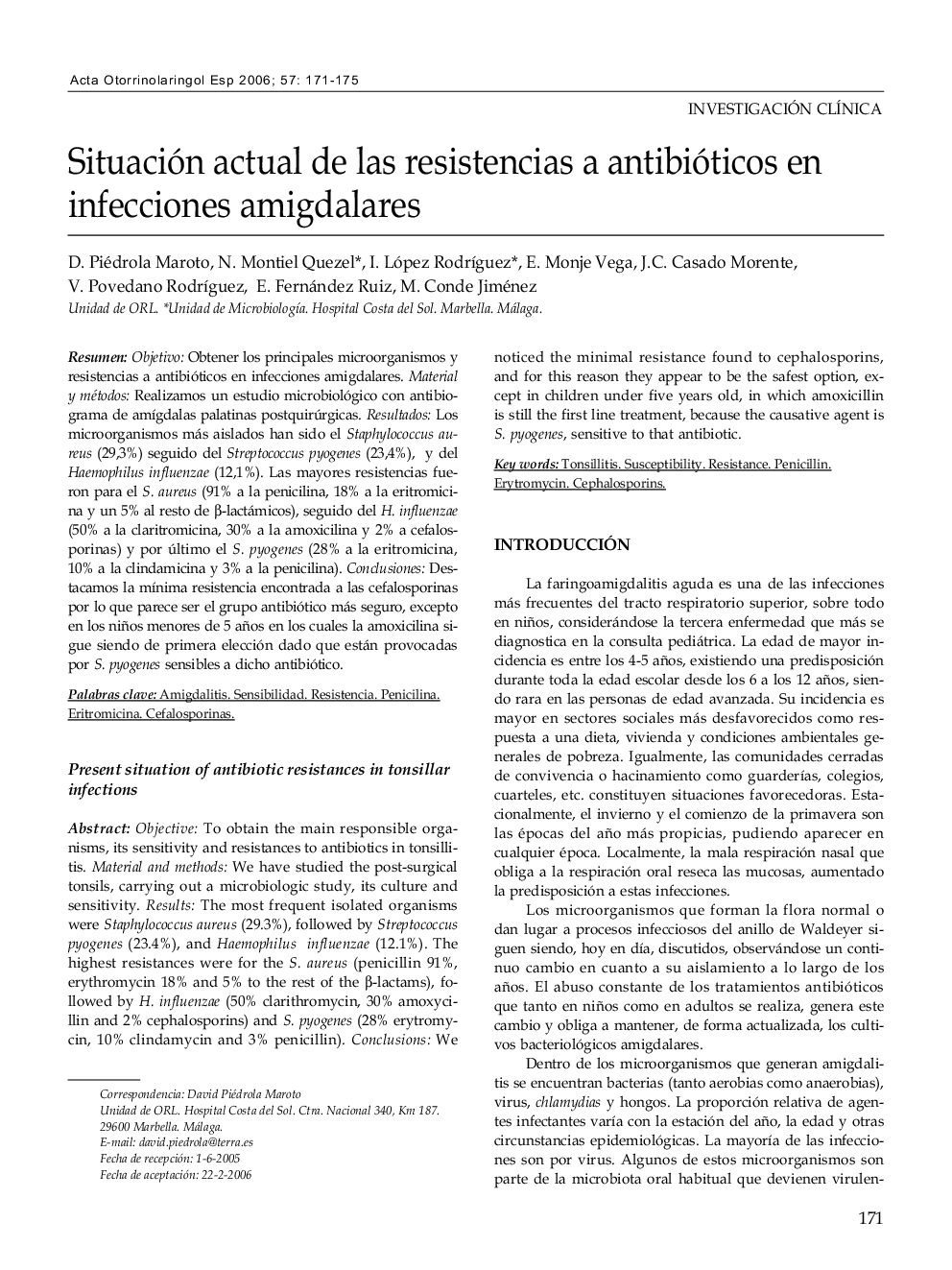| کد مقاله | کد نشریه | سال انتشار | مقاله انگلیسی | نسخه تمام متن |
|---|---|---|---|---|
| 4102863 | 1268869 | 2006 | 5 صفحه PDF | دانلود رایگان |

ResumenObjetivoObtener los principales microorganismos y resistencias a antibióticos en infecciones amigdalares.Material y métodosRealizamos un estudio microbiológico con antibiograma de amígdalas palatinas postquirúrgicas.ResultadosLos microorganismos más aislados han sido el Staphylococcus aureus (29,3%) seguido del Streptococcus pyogenes (23,4%), y del Haemophilus influenzae (12,1%). Las mayores resistencias fueron para el S. aureus (91% a la penicilina, 18% a la eritromicina y un 5% al resto de ß-lactámicos), seguido del H. influenzae (50% a la claritromicina, 30% a la amoxicilina y 2% a cefalosporinas) y por último el S. pyogenes (28% a la eritromicina, 10% a la clindamicina y 3% a la penicilina).ConclusionesDestacamos la mínima resistencia encontrada a las cefalosporinas por lo que parece ser el grupo antibiótico más seguro, excepto en los niños menores de 5 años en los cuales la amoxicilina sigue siendo de primera elección dado que están provocadas por S. pyogenes sensibles a dicho antibiótico.
ObjectiveTo obtain the main responsible organisms, its sensitivity and resistances to antibiotics in tonsillitis.Material and methodsWe have studied the post-surgical tonsils, carrying out a microbiologic study, its culture and sensitivity.ResultsThe most frequent isolated organisms were Staphylococcus aureus (29.3%), followed by Streptococcus pyogenes (23.4%), and Haemophilus influenzae (12.1%). The highest resistances were for the S. aureus (penicillin 91%, erythromycin 18% and 5% to the rest of the ß-lactams), followed by H. influenzae (50% clarithromycin, 30% amoxycillin and 2% cephalosporins) and S. pyogenes (28% erytromycin, 10% clindamycin and 3% penicillin).ConclusionsWe noticed the minimal resistance found to cephalosporins, and for this reason they appear to be the safest option, except in children under five years old, in which amoxicillin is still the first line treatment, because the causative agent is S. pyogenes, sensitive to that antibiotic.
Journal: Acta Otorrinolaringológica Española - Volume 57, Issue 4, 2006, Pages 171-175